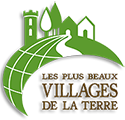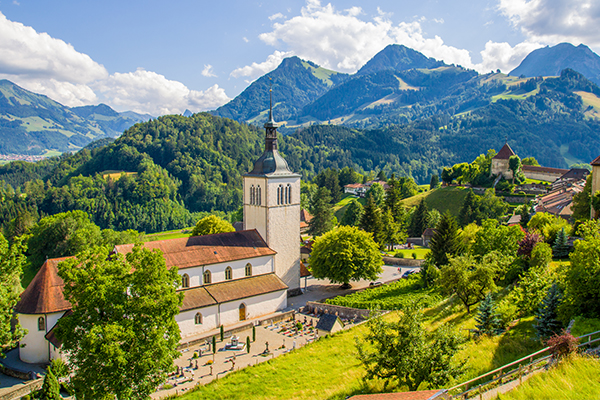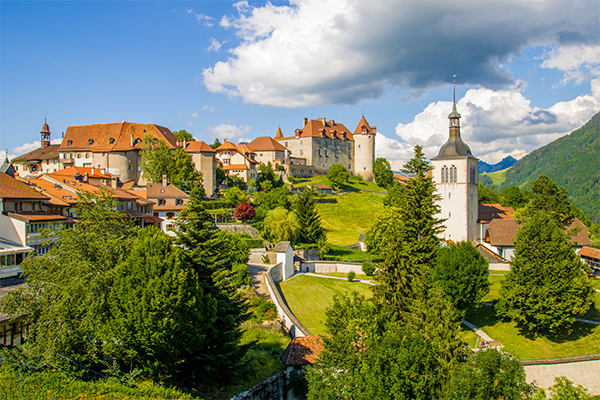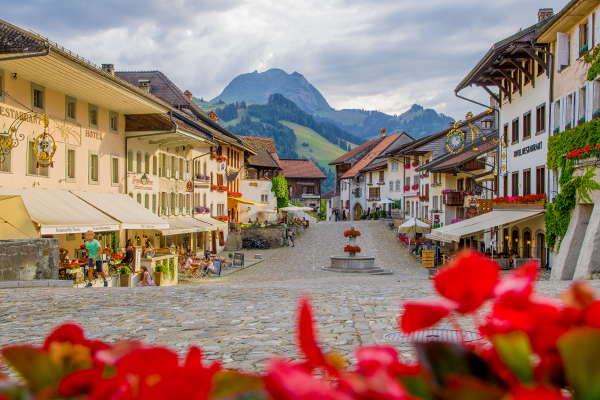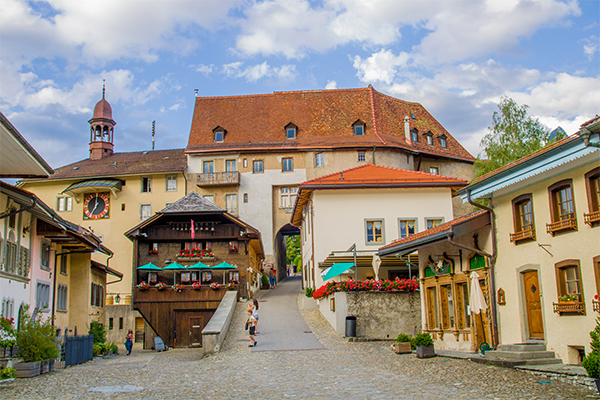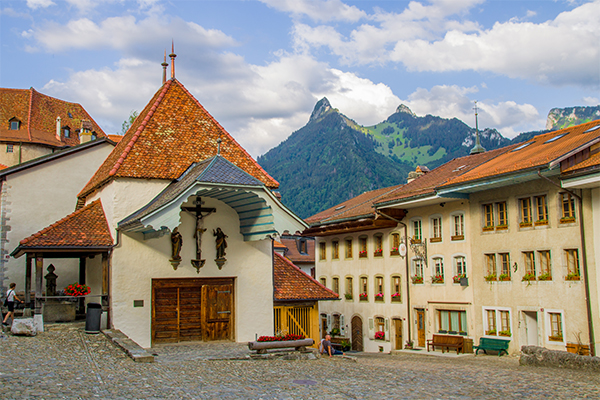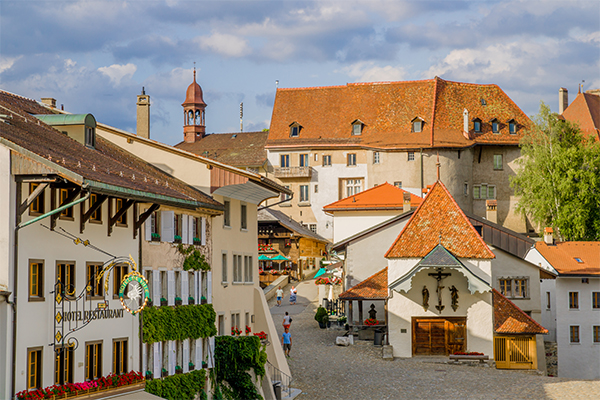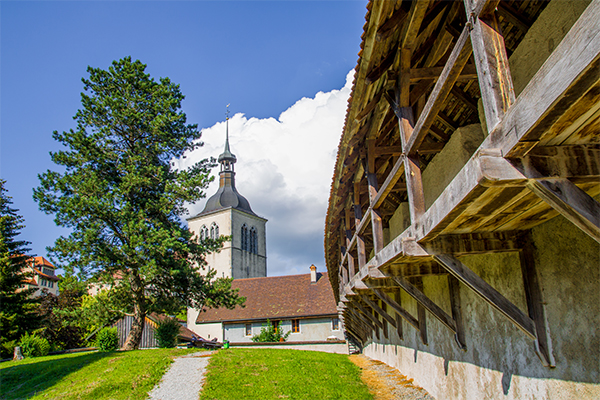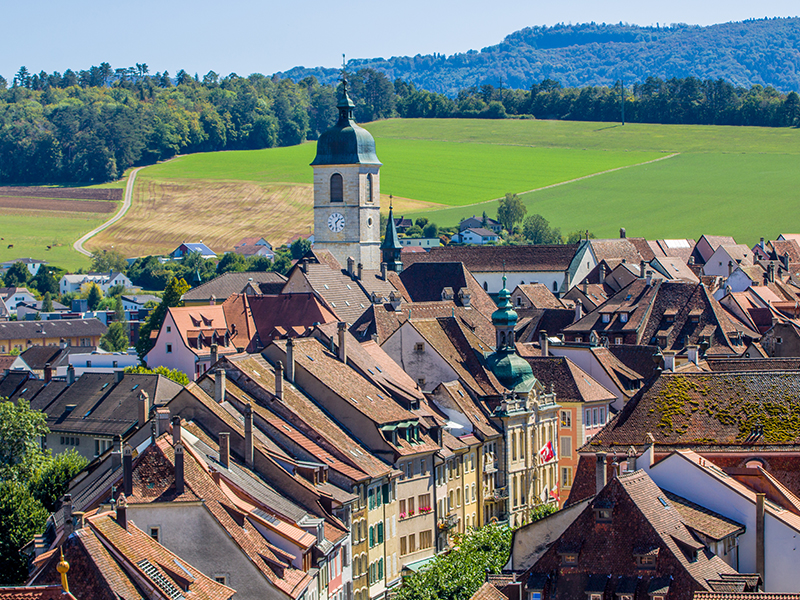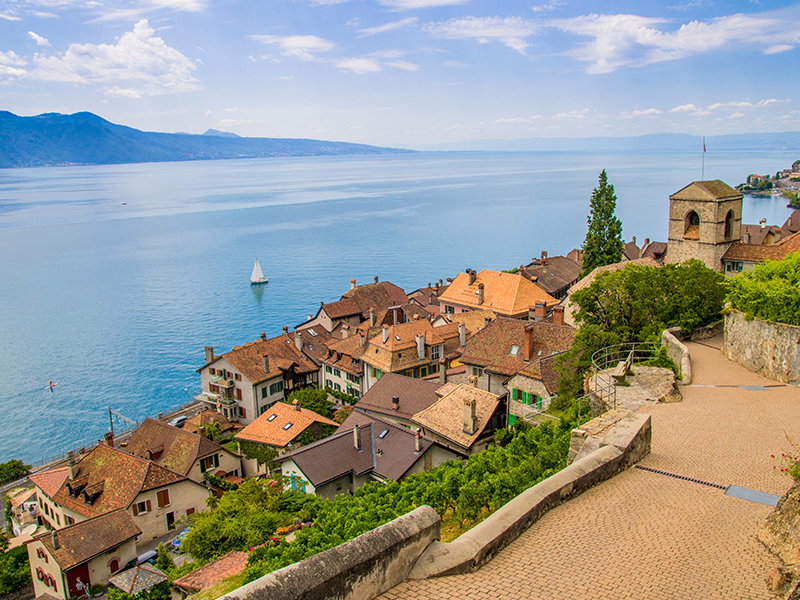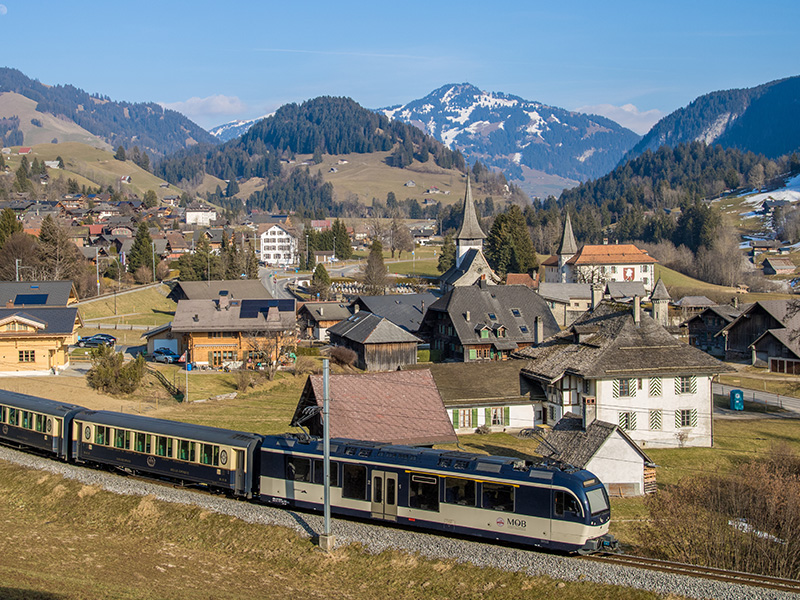Gruyères
The oldest document in which the Counts of Gruyères are mentioned dates back to the end of the 11th century; from that time, until 1554, the family maintained its dominion over a rather vast territory and kept itself independent as vassal of the House of Savoy.
In 1554 the last count of the dynasty, Michel, was forced to sell the lordship, which was then disputed between Bern and Fribourg. The small village, which developed mainly from the 13th century onwards, has retained its original feudal appearance and a large part of the town walls. The current ramparts date back to the 15th century; to the south stands the imposing square tower of Chupia-Bârba, part of the 12th century, while on the north side the 15th century barbican, called le Belluard, has been preserved intact.
The castle, which stands on the upper part of the hill, already existed in the 12th century but was almost entirely rebuilt after 1480; the circular keep of Savoyard type dates back to the 13th century. The castle, seat of the Fribourg bailiffs to suffer since 1555, was sold to the Bovy family in 1848, then redeemed by the state of Fribourg in 1938. In the inner courtyard there is the proven chapel dedicated to St. John the Baptist. Built in the 15th century, it was partially rebuilt after 1480; it preserves 15th century stained glass windows. In the castle: "Salle de Bourgogne", hall with landscapes painted by J.B. Corot and B. Menn, and the Knights' Hall. The church of S. Teodulo, founded in the 13th century, has a bell tower above a prothyrum from 1680; the nave is from 1860, the choir from 1731. The village preserves a beautiful group of houses from the XV-XVII centuries. In the main street, the house known as the house of Chalamala, named after the jester of the Count of Gruyère, who lived in 1531, is characterised by its facade with cross vaulted and arched windows. Halfway down the street is the Calvary of P. Ardieu (1705). The Part-Dieu Antica Carthusian monastery founded in 1307, was suppressed in 1848. The convent buildings have almost entirely disappeared: the church and a large building remain.
Not to be missed
Features
There are no upcoming events.
| Culture |  |
| Landscape |  |
| Gastronomy |  |
